80 g / m² seed paper with flower seeds
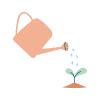 Navigate to Information Information
Navigate to Information Information 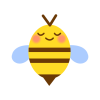 Navigate to Buzz score: 2 Buzz score: 2
Navigate to Buzz score: 2 Buzz score: 2 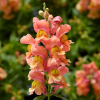 Navigate to Snapdragon Snapdragon
Navigate to Snapdragon Snapdragon 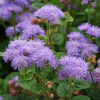 Navigate to Floss Flower Floss Flower
Navigate to Floss Flower Floss Flower 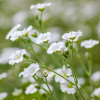 Navigate to Baby's Breath Baby's Breath
Navigate to Baby's Breath Baby's Breath 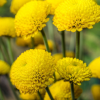 Navigate to Feverfew Feverfew
Navigate to Feverfew Feverfew 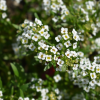 Navigate to Sweet alyssum Sweet alyssum
Navigate to Sweet alyssum Sweet alyssum 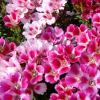 Navigate to Godetia Godetia
Navigate to Godetia Godetia 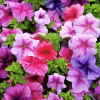 Navigate to Petunia Petunia
Navigate to Petunia Petunia 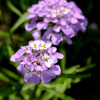 Navigate to Candytufft Candytufft
Navigate to Candytufft Candytufft 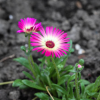 Navigate to Livingstone Daisy Livingstone Daisy
Navigate to Livingstone Daisy Livingstone Daisy 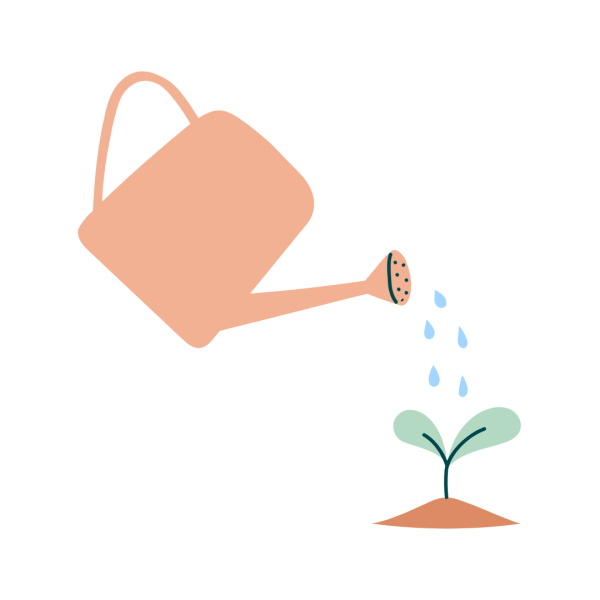
Information
- Seeds: Snapdragon, Floss Flower, Baby’s Breath, Feverfew, Sweet alyssum, Godeta, Petunia, Candytufft, Livingstone Daisy
- Origin of the seeds: Netherlands
- Outdoor sowing: March – May
- Indoor sowing: Year-round
- Watering: Keep the paper moist for the first 5 days
- Germination: Within 5–6 days
- Flowering: After approximately 6 weeks
- Plant type: Annuals

Buzz score: 2
The buzz score indicates how much food our seeds provide to pollinators such as bees, butterflies and other insects. 1 bee: Moderately pollinator-friendly to 3 bee: Extremely pollinator-friendly.
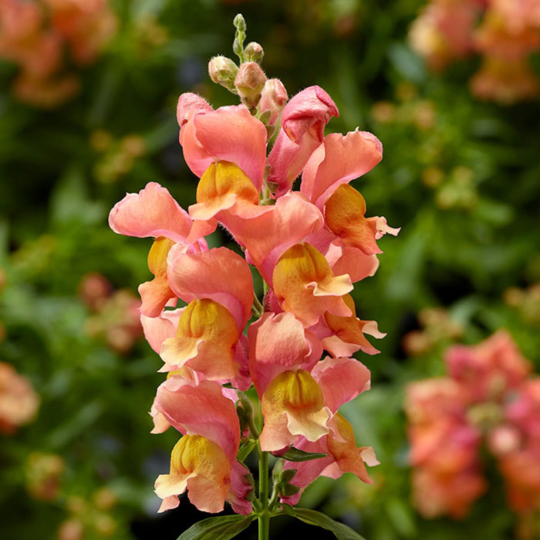
Snapdragon
Snapdragons, also known as Antirrhinum, are charming flowers that brighten up gardens and borders. These versatile plants come in a variety of colours, ranging from soft pastels to vibrant hues. They thrive in sunlight and drained soil, making them easy to care for. Snapdragons are popular choices for gardeners and florists alike because of their prolonged flowering and attractive appearance. They often attract bees and butterflies, so they also have a positive impact on biodiversity.
Pollinators are our little heroes, but they face many challenges to survive. You can support them by growing pollinator-friendly plants in your garden. These flowers and herbs provide essential food and habitat for creatures like butterflies, bees, and other insects that play a vital role in pollinating our food crops. Without pollinators, we’d have fewer fruits, vegetables, and even coffee!
The importance of pollinators to our ecosystem and food supply is enormous. By helping them thrive, we contribute to preserving biodiversity and securing our food sources. Planting a pollinator-friendly garden is a simple yet powerful way to protect the environment and support these vital species.

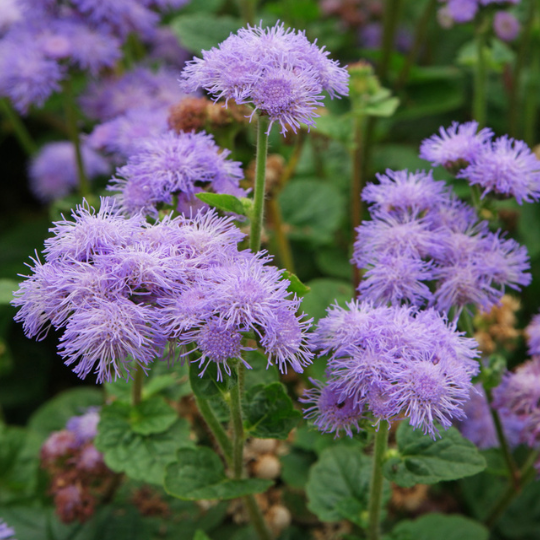
Floss Flower
Floss Flower, also known as Ageratum houstonianum, is a popular annual flower appreciated for its delicate appearance and striking blue hues. Native to Central America, this plant blooms profusely throughout the summer months. Its compact growth and attractive greenery contrast nicely with its characteristic fluffy, light blue flowers. Floss Flowers thrive in sun or semi-shade and drained soil. It is often found in borders, flower beds and flower pots, attracting butterflies. Regular pruning promotes longer flowering. An easy-to-grow option for colourful garden designs.
Pollinators are our little heroes, but they face many challenges to survive. You can support them by growing pollinator-friendly plants in your garden. These flowers and herbs provide essential food and habitat for creatures like butterflies, bees, and other insects that play a vital role in pollinating our food crops. Without pollinators, we’d have fewer fruits, vegetables, and even coffee!
The importance of pollinators to our ecosystem and food supply is enormous. By helping them thrive, we contribute to preserving biodiversity and securing our food sources. Planting a pollinator-friendly garden is a simple yet powerful way to protect the environment and support these vital species.

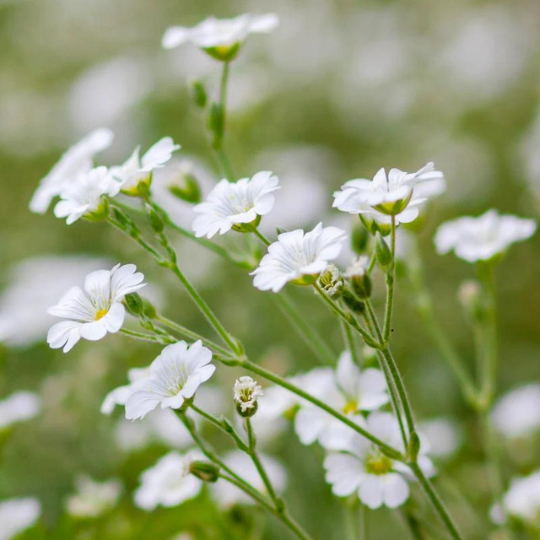
Baby's Breath
Baby’s Breath, or Gypsophila, is a delicate and sophisticated flowering plant that beautifies gardens and bouquets. With countless tiny flowers that resemble cloud-like clusters, it creates an airy and fairy-like appearance. Gypsophila comes in a variety of colours, but white is the most common. It is often used to complement bridal bouquets and floral arrangements because of its subtle beauty. This plant thrives in sunny areas with well-drained soil and requires minimal care. Its versatility, long shelf life and romantic look make Baby’s Breath a popular choice in both garden design and floral design.
Pollinators are our little heroes, but they face many challenges to survive. You can support them by growing pollinator-friendly plants in your garden. These flowers and herbs provide essential food and habitat for creatures like butterflies, bees, and other insects that play a vital role in pollinating our food crops. Without pollinators, we’d have fewer fruits, vegetables, and even coffee!
The importance of pollinators to our ecosystem and food supply is enormous. By helping them thrive, we contribute to preserving biodiversity and securing our food sources. Planting a pollinator-friendly garden is a simple yet powerful way to protect the environment and support these vital species.

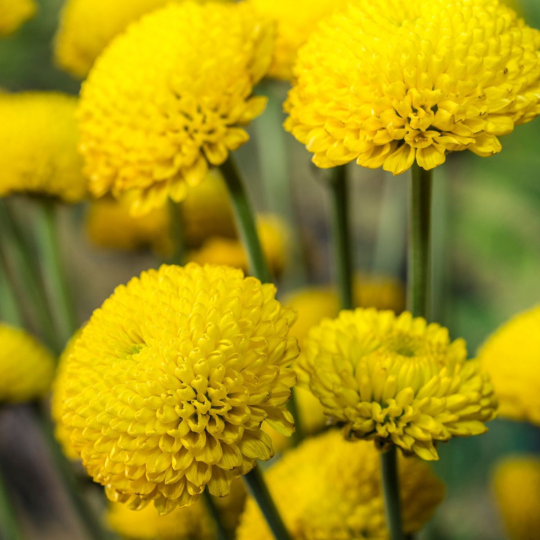
Feverfew
Feverfew, scientifically known as Tanacetum parthenium, is an herbaceous plant much appreciated for its medicinal and ornamental properties. This perennial plant, native to the Balkans, produces clusters of small white flowers with yellow discs. But it is most famous for its use in phytotherapy, where it is used to treat headaches and migraines. It contains compounds such as parthenolide, which have anti-inflammatory properties. Feverfew thrives in sunny locations with well-drained soil and is generally easy to maintain. Besides its medicinal uses, it also adds a touch of natural beauty to gardens and is a welcome addition to herb gardens.
We carefully choose pollinator-friendly seeds for our seed paper, but sometimes that can be a challenge. The plant you see might not be a top choice for certain pollinators, but don’t worry! Our seed mix includes a variety of plants that provide food and habitat for bees, butterflies, and other important pollinators.

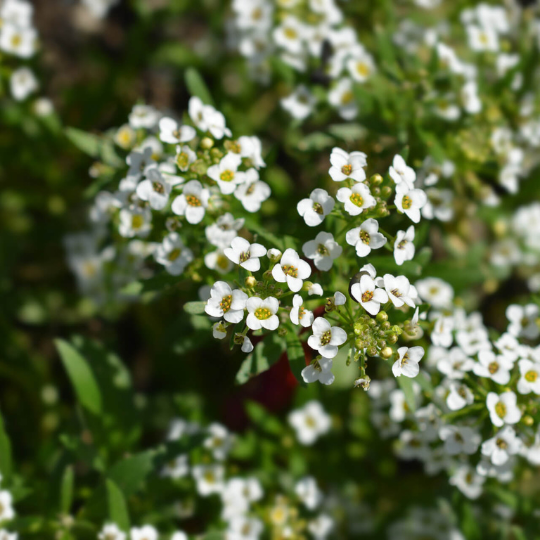
Sweet alyssum
Sweet alyssum, also known as snow cloth or Lobularia maritima, is a charming annual that adorns gardens with its clusters of small, fragrant flowers. Native to the Mediterranean region, this plant thrives in sunny to slightly shady conditions and drained soil. The flowers range from white to pink, purple and yellow, creating a carpet-like effect that is beautiful in flower beds as well as hanging baskets. Sweet alyssum attracts bees, butterflies and other pollinators, giving it a positive impact on biodiversity. Its attractive flowers and sweet fragrance make it a favourite among gardeners and lovers of colourful landscapes.
Pollinators are our little heroes, but they face many challenges to survive. You can support them by growing pollinator-friendly plants in your garden. These flowers and herbs provide essential food and habitat for creatures like butterflies, bees, and other insects that play a vital role in pollinating our food crops. Without pollinators, we’d have fewer fruits, vegetables, and even coffee!
The importance of pollinators to our ecosystem and food supply is enormous. By helping them thrive, we contribute to preserving biodiversity and securing our food sources. Planting a pollinator-friendly garden is a simple yet powerful way to protect the environment and support these vital species.

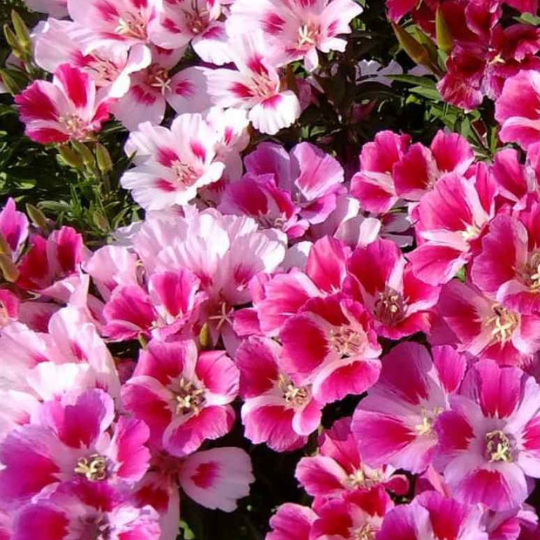
Godetia
Godetia, also known as Azaleaflora Double Mixed, is a beautiful annual that enchants gardens with its lush, double-flowered flowers. With an exuberant colour palette ranging from soft pastels to vibrant hues, this Azelea variety adds a touch of romance to flowerbeds and borders. It thrives in sunlight and well-drained soil, and requires little effort to grow. The godetia is loved for its long flowering period in summer, making it a wonderful choice for both novice and experienced gardeners who aim to create colourful and lush flower carpets in their outdoor spaces.
We carefully choose pollinator-friendly seeds for our seed paper, but sometimes that can be a challenge. The plant you see might not be a top choice for certain pollinators, but don’t worry! Our seed mix includes a variety of plants that provide food and habitat for bees, butterflies, and other important pollinators.

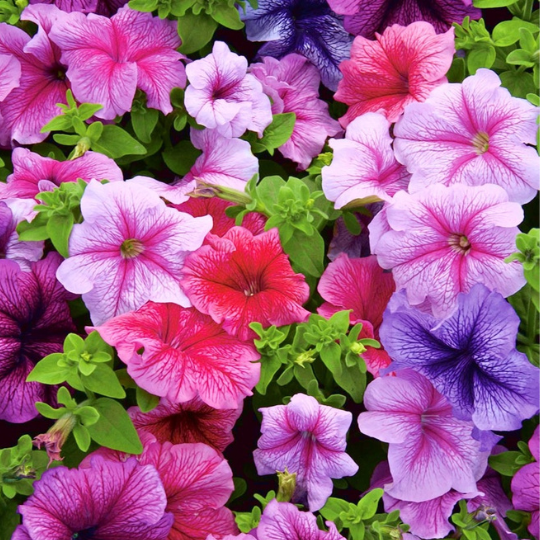
Petunia
Petunias, beloved annual flowers, add colour and joy to gardens and pots. Available in various hues, such as vibrant pink, purple, white and yellow, they offer a range of design possibilities. Their trumpet-shaped flowers attract butterflies and hummingbirds, creating a vibrant biodiversity. Petunias flourish in full sun, but also thrive in light shade, provided the soil is well-drained. Their maintenance is generally simple, with regular watering and removal of dead flowers for healthy growth and continuous flowering. Whether in gardens, hanging baskets or borders, petunias bring an explosion of colour and vitality.
We carefully choose pollinator-friendly seeds for our seed paper, but sometimes that can be a challenge. The plant you see might not be a top choice for certain pollinators, but don’t worry! Our seed mix includes a variety of plants that provide food and habitat for bees, butterflies, and other important pollinators.

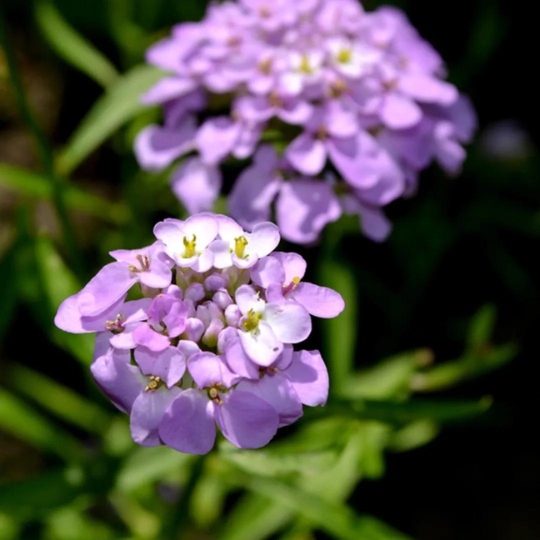
Candytufft
Candytufft, also known as iIberis umbellata, is an enchanting annual that brightens up gardens with its compact growth and colourful flowers. With clusters of small flowers in shades of white, pink, purple and red, this plant creates an attractive sight in borders and flower beds. Candytufft thrives in full sun and well-drained soil, making it an easy-care option. The flowers attract butterflies and bees, contributing to biodiversity. This flower is loved for its long flowering period and versatility in garden design.
We carefully choose pollinator-friendly seeds for our seed paper, but sometimes that can be a challenge. The plant you see might not be a top choice for certain pollinators, but don’t worry! Our seed mix includes a variety of plants that provide food and habitat for bees, butterflies, and other important pollinators.

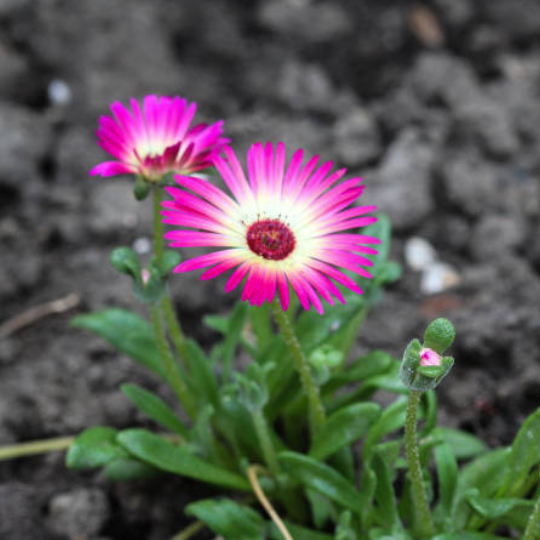
Livingstone Daisy
The Livingstone Daisy, also known as Dorotheanthus bellidiformis, is a beautiful and tough succulent that adds colour and vitality to gardens and containers. With its glossy, succulent leaves and striking flowers in shades of pink, red and white, this plant attracts immediate attention. The Livingstone Daisy is drought-resistant and thrives in sunny, warm environments. Its low maintenance requirements make it a favourite for gardeners looking for easy and colourful additions to their landscape. This succulent adds texture and vibrancy to rock gardens, borders and hanging baskets.
We carefully choose pollinator-friendly seeds for our seed paper, but sometimes that can be a challenge. The plant you see might not be a top choice for certain pollinators, but don’t worry! Our seed mix includes a variety of plants that provide food and habitat for bees, butterflies, and other important pollinators.
